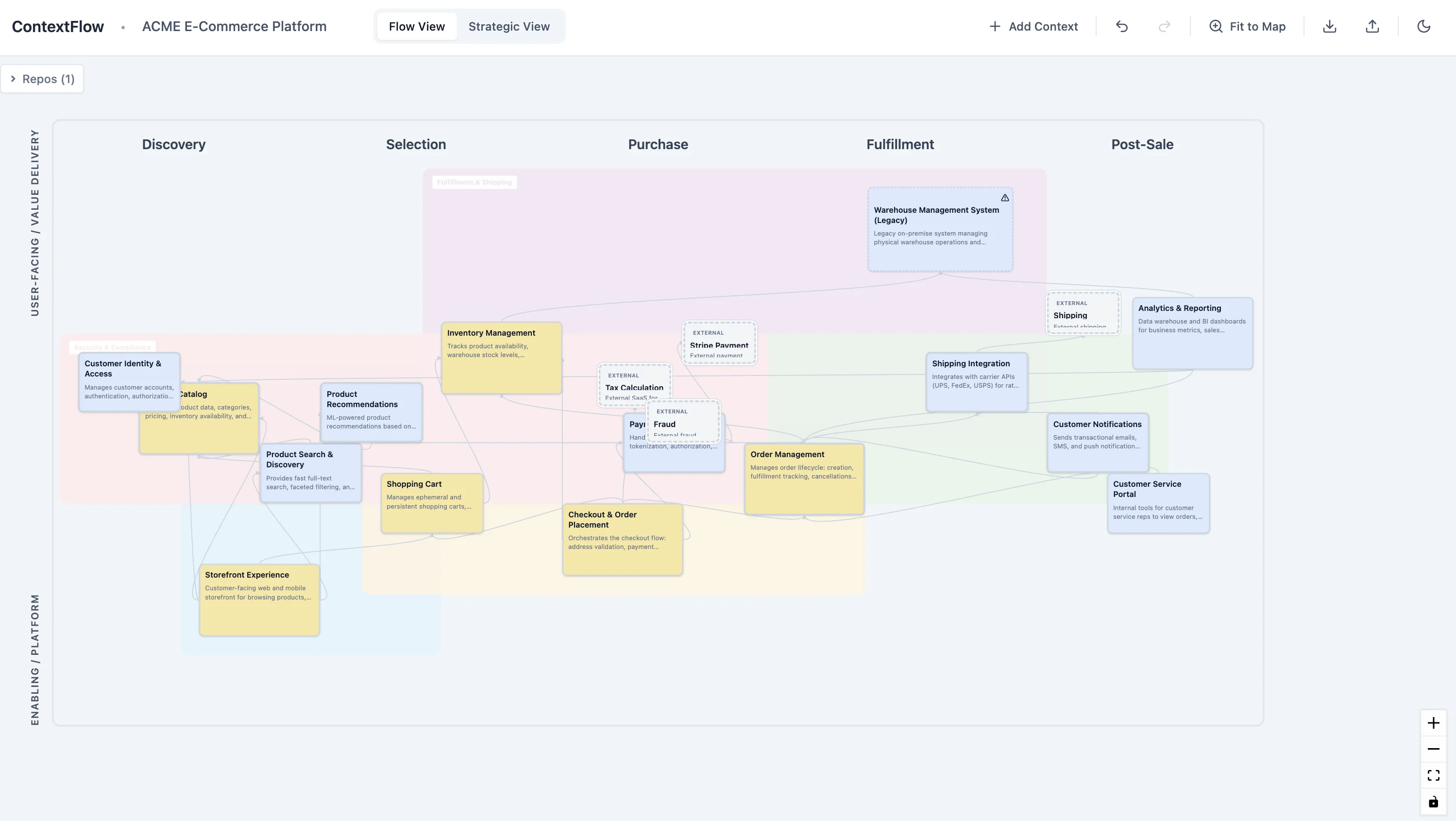ContextFlow
Map reality, not aspiration.
Visual DDD context mapper for analyzing bounded contexts, their relationships, and code ownership across three complementary views

Map reality, not aspiration.
Visual DDD context mapper for analyzing bounded contexts, their relationships, and code ownership across three complementary views

ContextFlow helps teams map and edit their system architecture as it actually exists — not as the slide deck says it should be. It captures:
The key differentiator: three models of your sociotechnical system.
Context mapping: Shows how value and data move left-to-right through your system. Map bounded contexts and visualize how work flows between them.
Stages are configurable per project: e.g., "Discovery → Selection → Purchase → Fulfillment → Post-Sale" for e-commerce, or "Ingest → Normalize → Analyze → Publish" for data pipelines.


Domain classification: Classify bounded contexts using Nick Tune's Core Domain Chart. Position contexts by Business Differentiation (Y-axis) and Model Complexity (X-axis) to identify your core domains vs supporting/generic capabilities.
This helps prioritize strategic investment and identify what should be core vs commodity.
Wardley mapping: Shows the complete Wardley Map value chain with three layers:
All positioned along the evolution axis: Genesis → Custom-built → Product/Rental → Commodity/Utility.
Includes 2-hop connection highlighting showing complete value chains. Switch between views live — same contexts, same relationships, different strategic insights.

Most architecture diagrams show the system you wish you had. ContextFlow helps you map bounded contexts as they actually exist in your codebase, with DDD strategic patterns, ownership clarity, and boundary integrity.
Value Stream View — Start here. Map contexts and how work flows through your system.
Distillation View — Classify your contexts using Nick Tune's Core Domain Chart.
Strategic View — Complete the strategic picture with actors, user needs, and Wardley mapping.
MIT licensed. No registration, no paywalls. Designed for DDD facilitators, platform architects, and teams doing strategic design.